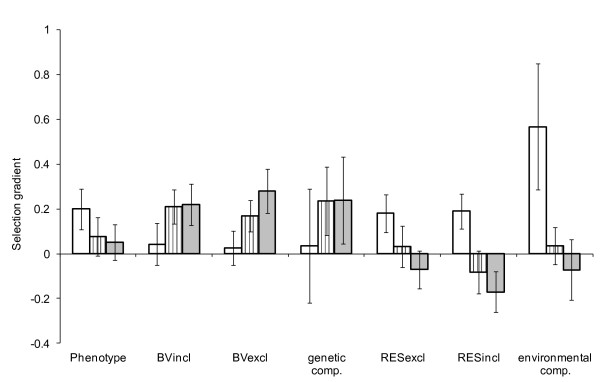Figure 4.
The relationship between male fitness (number of eggs fertilised under aviary conditions) and each of the three traits: tarsus length (white bars), directed song rate (hatched bars) and beak colour (grey bars). The graph compares standardised selection gradients (± SE, standardised to units of phenotypic standard deviations of the trait) calculated using a breeding value approach with genetic selection gradients estimated directly from the covariance between trait and relative fitness in a two-trait model. The different estimations of the genetic and environmental components are ordered from left to right according to the expected bias towards the phenotypic selection gradient. Thus, the phenotypic selection gradient is followed by selection gradients estimated using the traditional breeding value (BVincl), the breeding value calculated with the individual's phenotype excluded from the data file (BVexcl) and finally the selection gradient estimated from the covariance between trait and fitness (genetic comp.). Similarly, the environmental components are ordered from the residual from the phenotype over BVexcl (RESexcl) via the residual from the phenotype over the traditional BV (RESincl) to the environmental covariance between trait and fitness (environmental comp.).

